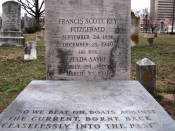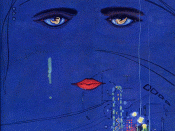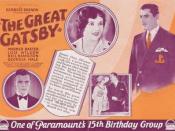Many American historians have described the 1920s as a "period which crystallized the vast social changes initiated in World War I. It was an era of carefree release" (Jenkins). One of the most significant legacies of this era was the loosening of restrictions on women. By this decade, "Victorianism and the turn of the century Gibson Girl were out, and in her place was a saucy, booze-drinking, cigarette smoking, modern women" (Rayburn). The Great Gatsby accurately depicts, with few exceptions, the women of the 1920s as having a much freer moral and social conduct than their predecessors.
Throughout the course of the novel, the character Daisy accurately reflects the 1920s image of the "golden girl." Golden girls were described as straight, fearless, exciting, and somewhat egotistical women who were characterized by their "kissing and not telling." The women possessed "illusory unsophistication" which compelled men with a need to protect them (Jenkins 70).
Fitzgerald describes Daisy as being " . . . high in a white palace" (127). She is "the king's daughter, the golden girl" (127). The novel upholds this portrayal in both Daisy's appearance and actions. When describing Daisy, Fitzgerald states, "Her face was sad and lovely with bright things in it, bright eyes and a bright passionate mouth--but there was an excitement in her voice that men who had cared for her found difficult to forget . . . " (14). Daisy unintentionally hints at her need for protection when the narrator remarks, " . . . [she] held my hand for a moment, looking up into my face, promising that there was no one in the world she so much wanted to see. That was a way she had" (13). This emphasizes Daisy's portrayal of the "golden girl." Many of these "golden girls" wore elegant, sexy, classic...


